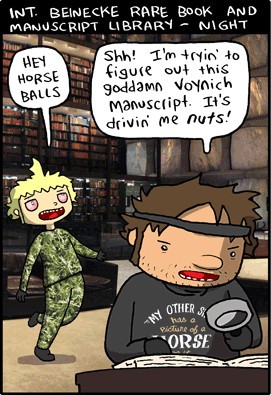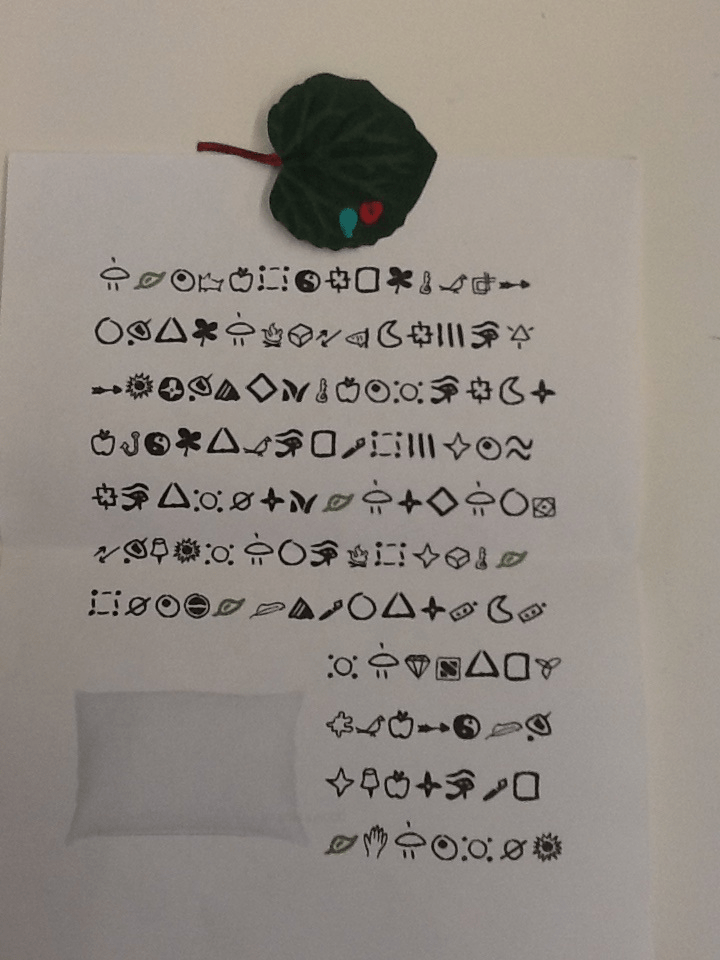How many more Voynich Manuscript theories does 2014 plan to dump in my inbox? Hot on the heels of Tucker & Talbert, Fallacara & Occhinegro, and indeed Stephen Bax (who I recently banned from commenting on Cipher Mysteries) as well as several others whose theories I’m patiently working through (please forgive the delay, but e.g. it takes time to learn Nahuatl well enough to comment on it), comes yet another new Voynich theory, this time courtesy of Jutta Kellner of Dransfeld.
Kellner has historical mystery ‘form’, in that she previously self-published a (2011) book 2012 + 4,3 Die Lösung des Mayakalenders und mehr… (i.e. a 2012 Mayan calendar theory book). And just so you know, her company JKdesign also sells a range of curiously beautiful neck-warmers as well as loads and loads of zips.
But what of her Voynich Manuscript theory, I hear you asak? Well, she claims to have first begun to solve the puzzle over an intensive five day period in February 2007, and to have been supported in her extensive secondary research by a family member ever since. Now she is looking for some kind of ‘crowdfunding’ to help her complete the last stage – translating the body of the text – by the end of 2014: she’s looking for somewhere between 20,000 and 25,000 euros. Which is, of course, a lot of zips.
But rather than laying to claim nine wonky words or one wobbly diagram, Kellner has actually published some fragments of her decryption. She claims that the plaintext is in Latin, dates from the 13th and 14th centuries, and “was written as a kind of adventure novel”: specifically, “it’s all about battles, assaults, quarrels, togetherness, voyages, captureing ships and much, much more…” So why can’t we just read it all straight off? Her good reason is that:
No computer program in the world can do this translation work, because you first need to extract the meaning from a “speech cloud”, but in the end there is always a unique solution. You never know in advance how long a sentence is. It’s like solveing a two-sided crossword in the head.
Of course I will not exposure the key. That would be just like you publish an ingenious invention without patent application. There were many inventors or explorers in the past who were cheated, exploited and ignored.
All the same, I think we can get pretty close to what (she thinks) she’s doing to decrypt our mysterious manuscript’s text. Let’s look at one of her examples (decrypted from Voynichese into Latin, and then translated into German and English), the top line of f28v (though she has the first word as EVA “tshol” when it should clearly be “kshol”):-
Voynichese: tshol qooiiin shor pchoiiin shepchy qoty dy shory
German: Zum Vierten Male Wasser zu holen ist mit Mühe verbunden. Wir sind sauer, weil wir nicht in den Hafen können, da dieser natürlich nicht die Tiefe hat. Demzufolge müssen wir jetzt außerhalb vor Anker liegen.
English: A fourth time to fetch water requires effort. We are angry because we can not in the harbor, because it certainly does not have the depth. Accordingly, we now have to be at anchor outside.
(Incidentally, Kellner dates this page to “10/12/1245”.)
For a Voynich researcher, the top line of f28v presents lots of classic Voynichese ‘motifs’ (one might even call them ‘leitmotifs’):
* it has a gallows character as the first letter of the line, paragraph, and page (just as you’d expect)
* it has a horizontal “Neal key” (a pair of single-leg gallows half-to-two-thirds of the way across the topmost line of the paragraph)
* it has a double ‘o’ in the second word (qooiiin), as a result of which looks to me as though it may well have been miscopied from ‘qoaiin’
* it has a jarring e-gallows pair, that (again) looks like it may have been miscopied (‘shepchy’ as written, when I would have instead expected ‘shcphey’)
Perhaps the most visually obvious thing about this short line is that it contains about eight words, and many of those are built up out of extremely common patterns: ol, or, qo, aiin, dy. But while I would broadly agree with the late Mark Perakh’s conclusion that the Voynich Manuscript’s text is probably abbreviated in some way, I somehow doubt that it could have been abbreviated to the degree that Kellner’s claimed decryption would appear to have been.
What’s going on here? I suspect that Kellner is translating the “4”-shape in the first “qo” pair to “A fourth time”: but this would make no sense for a 13th century or even a 14th century text, because the digit “4” wasn’t written in that way until very late in the 15th century. As for the rest, I have the strong suspicion that she is largely reading the rest as a Latin acrostic – i.e. building up phrases based on the first letter of the words only.
Perhaps Cipher Mysteries readers will do better than me at working out precisely what she’s doing with all this. But really, whatever it happens to be, right now I honestly don’t think it will turn out to be anything much to do with either cryptology or linguistics.
As always, you are entirely free to do with your own money whatsoever you will. But so far I’m failling to find any reason at all to direct any of my own crowd-of-one’s money in the direction of Dransfeld.



